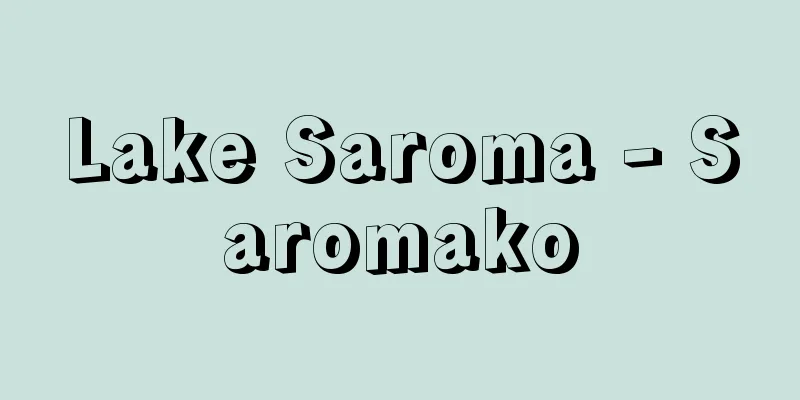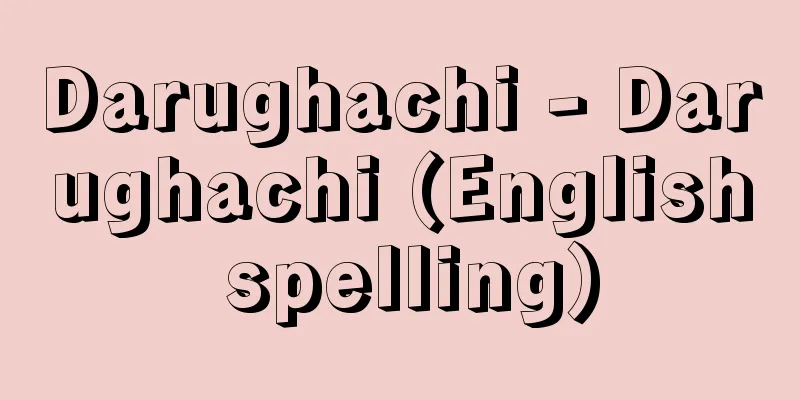Lake Saroma - Saromako

|
A saltwater lake on the coast of Okhotsk in northeastern Hokkaido. The lake's name comes from the Ainu language Saru-Oma-Toh, meaning "lake in reed fields." With an area of 151.82 square kilometers, it is the third largest lake in the world after Lake Biwa and Lake Kasumigaura. It has a circumference of 92 kilometers and a maximum depth of 19.6 meters. It is a lagoon separated from the Sea of Okhotsk by a sand spit 30 kilometers long and 200 to 700 meters wide. It once connected to the sea near Tofutsu at its eastern end, but was closed off by sand drift in winter. In 1929, an opening of about 300 meters was excavated in the center of the sand spit. This led to active exchange of lake water with seawater, allowing fish from the open sea to enter and providing a suitable place for scallops to grow. Currently, oysters, Hokkai shrimp, and sea urchins are cultivated in addition to scallops. The lake is designated as Abashiri Quasi-National Park, and there are colonies of coral reef coral at Cape Sango and Cape Kimuaneppu. The entire lake surface freezes over from early January to early March. [Jiro Okamoto] [Reference] |A lagoon in northeastern Hokkaido. It is the third largest lake in Japan (area 151.8 km). It is separated from the Sea of Okhotsk by a 30 km long sand spit, but because it is a brackish lake with seawater flowing in from a central opening (tidal mouth), scallops, oysters, Hokkai shrimp, sea urchins, and other creatures are cultivated there. It is included in Abashiri Quasi-National Park. Kitami City, Yubetsu Town, Monbetsu District, and Saroma Town, Tokoro District, Hokkaido ©Kitami City "> Lake Saroma Source: Shogakukan Encyclopedia Nipponica About Encyclopedia Nipponica Information | Legend |
|
北海道北東部、オホーツク海岸にある塩水湖。湖名はアイヌ語のサル・オマ・トー(葭原(よしはら)にある湖)の意。面積151.82平方キロメートルで、琵琶(びわ)湖、霞ヶ浦(かすみがうら)に次ぐ。周囲92キロメートル、最大深度19.6メートル。延長30キロメートル、幅200~700メートルの砂嘴(さし)によってオホーツク海と隔てられている潟湖(せきこ)で、かつては東端の鐺沸(とうふつ)付近で海に通じ、冬季は流砂で閉じられていたが、1929年(昭和4)砂嘴の中央に約300メートルの開口部が掘削された。これによって湖水と海水との交換が活発となり、外海の魚類が入り、またホタテガイ生育の適地となった。現在ホタテガイのほか、カキ、ホッカイシマエビ、ウニの養殖が行われる。網走(あばしり)国定公園に指定され、さんご岬、キムアネップ岬などにはアッケシソウ(ヤチサンゴ)の群落がある。1月上旬から3月上旬まで全湖面が結氷する。 [岡本次郎] [参照項目] |北海道北東部にある潟湖。日本で3番目に大きな湖(面積151.8km)である。延長30kmの砂嘴によってオホーツク海と隔てられるが、中央の開口部(潮口)から海水が流入する汽水湖のため、ホタテガイ、カキ、ホッカイシマエビ、ウニなどの養殖が行われている。網走国定公園に含まれる。北海道北見市・紋別郡湧別町・常呂郡佐呂間町©北見市"> サロマ湖 出典 小学館 日本大百科全書(ニッポニカ)日本大百科全書(ニッポニカ)について 情報 | 凡例 |
Recommend
CAVOK - CAVOK
...Also, when the cloud base height is unknown du...
Thalictrum kiusianum (English spelling) Thalictrum kiusianum
…[Michio Tamura]. … *Some of the terminology that...
Bull Terrier [species] (English spelling) Bullterrier
It is a domestic dog that originated in England. I...
Harut (English spelling)
…For example, Gabriel, also called the Holy Spiri...
Fusion - Gadai
〘noun〙① The joining together of two or more things...
Artificial gravity
Gravity is an artificial force created in a weight...
Hemigalus (English spelling)
A general term for a mammal of the Hemigalinae sub...
Torajiro Tsukamoto - Torajiro Tsukamoto
A non-church Christian evangelist. Born in Fukuok...
Balhash - English spelling Балхаш/Balhash
A city in Karaganda Oblast, Republic of Kazakhsta...
Kaigen Nanchin - Kaigen Nanchin
...Although it has been said that the change of e...
Yantra (English spelling) yantra [Sanskrit]
Symbolic geometric figures are used by Hindus, esp...
Liquid-liquid extraction
…The liquid obtained by extraction, mainly consis...
Acer campestre (English spelling) Acercampestre
… [Ken Ogata]. . … *Some of the terminology that ...
Organization chart - Soshikizu (English spelling) organization chart
A diagram showing the structure of an organization...
Calligraphy meeting (English spelling) shū huì
During the Song and Yuan dynasties in China, with ...





![Minami Shinano [Village] - Minami Shinano](/upload/images/67ccf3fb0d33e.webp)



